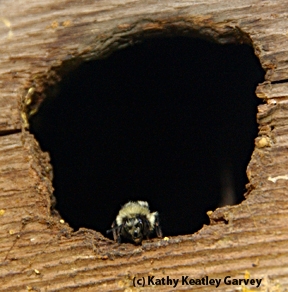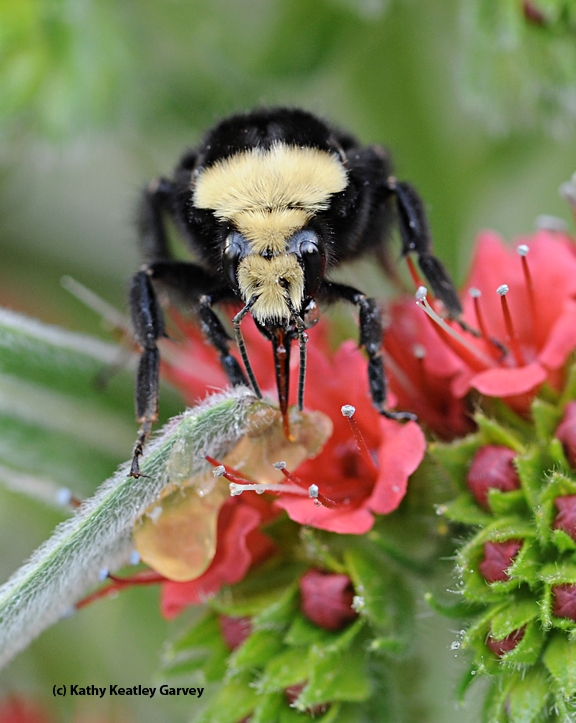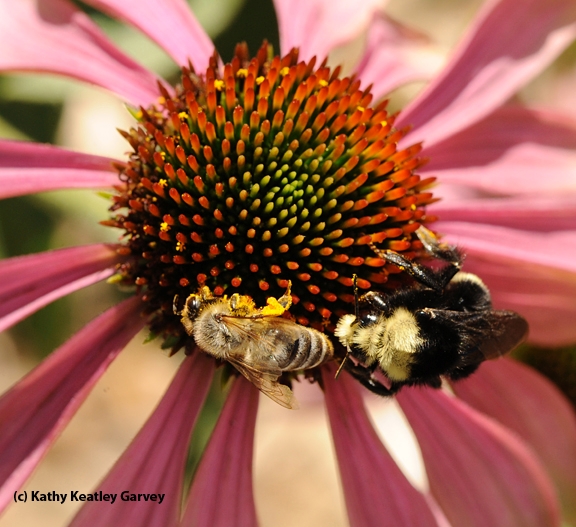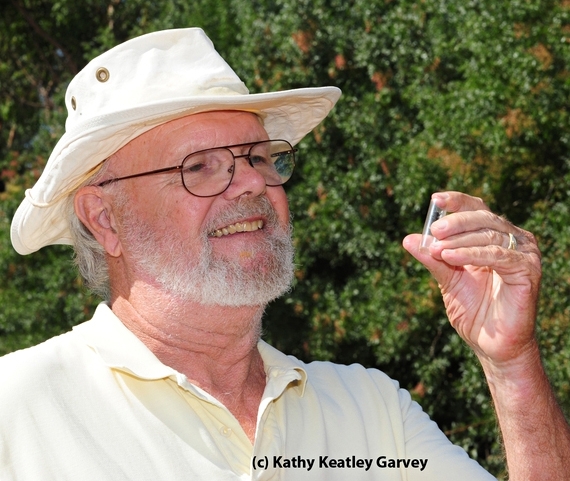Dec 17, 2013

Bumble bee ready to take flight from a birdhouse. (Photo by Kathy Keatley Garvey)
You can now order the book, titled "Bumble Bees of North America: An identification Guide," on the Princeton University Press website.
Billed as "the first comprehensive guide to North American bumble bees to be published in more than a century," it allows readers, both amateurs and professionals, to identify all 46 bumble bee species found in North America and learn about their ecology, changing geographic distributions, and the endangered and threatened species.
Native pollinator specialist Robbin Thorp, emeritus professor of entomology at UC Davis, is one of the four authors. Lead author is Paul H. Williams, a research entomologist at the Natural History Museum in London. Others making it happen: authors Leif L. Richardson, a doctoral candidate in the Department of Ecology and Evolutionary Biology at Dartmouth College; and Sheila R. Colla, postdoctoral fellow at the Natural Sciences and Engineering Research Council of Canada and a project leader at Wildlife Preservation Canada.
According to the Princeton website, the landmark book "draws on the latest molecular research, shows the enormous color variation within species, and guides readers through the many confusing convergences between species. It draws on a large repository of data from museum collections and presents state-of-the-art results on evolutionary relationships, distributions, and ecological roles. Illustrated keys allow identification of color morphs and social castes."
Bumble bees, you know, are among the most recognizable of the world's 20,000 species of bees. The genus, Bombus, has only 250 species. A small number, indeed.
For the past nine years, we've photographed them gathering nectar and pollen, and buzz-pollinating tomatoes. We've watched the queen searching for readymade nests, which are usually "abandoned rodent dens, open grass tussocks, hollow logs, and aboveground manmade structures," as the authors point out.
One summer we observed bumble bees nesting in a bird house positioned in an almond tree on the grounds of the Harry H. Laidlaw Jr. Honey Bee Research Facility on Bee Biology Road, UC Davis. A farmer donated the birdhouse--bumble bees included--to Thorp.
Thorp, a worldwide expert on bumble bees and other bees, is one of the instructors of The Bee Course, an annual workshop held at the Southwestern Research Station, Portal Ariz., for conservation biologists, pollination ecologists and "other biologists who want to gain greater knowledge of the systematics and biology of bees."
Meanwhile, the bumble bee book is drawing outstanding reviews. Fellow Bee Course instructor Stephen Buchmann of the University of Arizona, who received his doctorate in entomology at UC Davis, says of the book: "A better team of scientists couldn't have written this amazing new book on bumble bees." He describes it as "filled with diverse content" and predicts "it will be popular with its broad audience. Readers will want to get out and find bumble bees, observe them and learn what they can do to conserve them."
And speaking of books, UC Berkeley entomologist Gordon Frankie and Thorp have teamed with insect photographer/entomologist Rollin Coville and Barbara Ertter of UC Berkeley to write a California bee garden book, expected to be published (Heydey) in the fall of 2014. The working title is "California Bees and Blooms: A Guide for Gardeners and Naturalists."
We expect to see a renewed interest in bees as the result of these two long-awaited books.
And, hopefully, more bees!
Attached Images:

A yellow-faced bumble bee, Bombus vosnesenskii, on tower of jewels. (Photo by Kathy Keatley Garvey)

A honey bee and yellow-faced bumble bee sharing a coneflower. (Photo by Kathy Keatley Garvey)

Native pollinator specialist Robbin Thorp, emeritus professor of entomology at UC Davis. (Photo by Kathy Keatley Garvey)